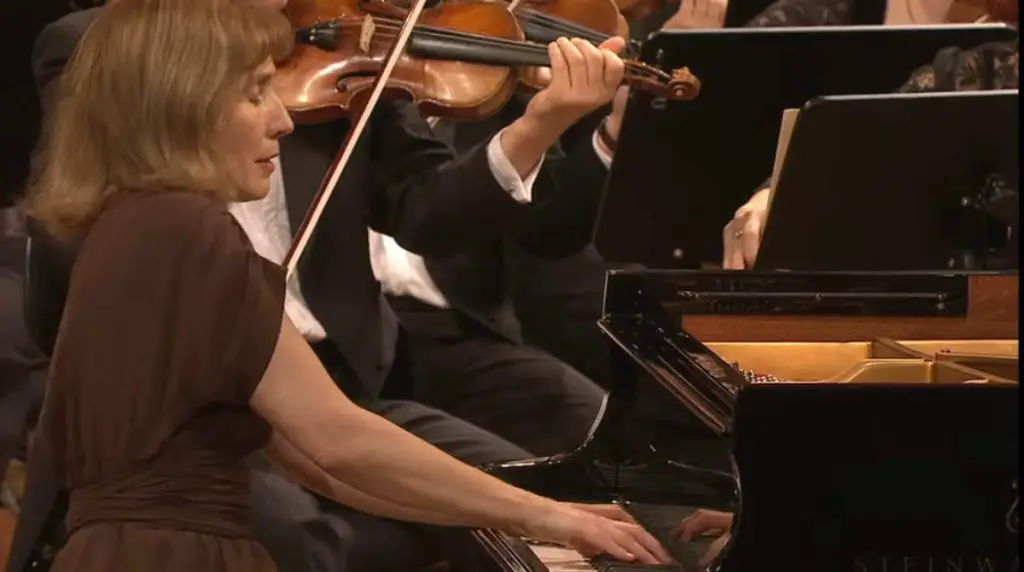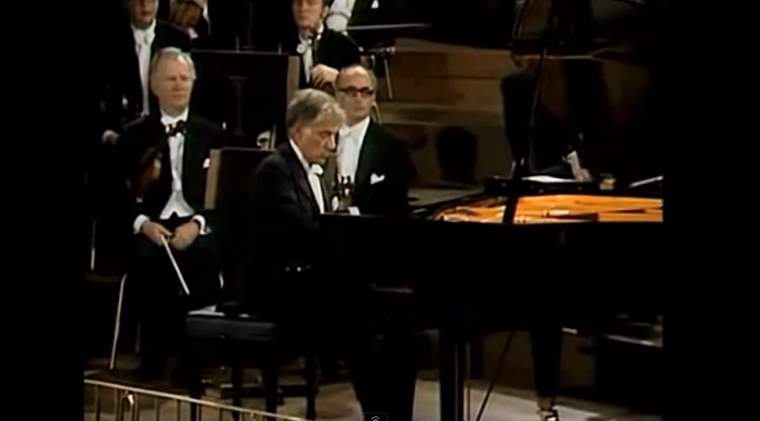Accompanied by the Israel Philharmonic Orchestra, Georgian classical pianist Khatia Buniatishvili performs Ludwig van Beethoven’s Piano Concerto No. 1 in C major, Op. 15. Conductor: Zubin Mehta. Recorded in July 2015.
The piece was written between 1796 and 1797 and Dedicated to Beethoven’s pupil Countess of Bratislava, Anna Louise Barbara (“Babette”) Keglevics. The first performance was in Prague in 1798, with Beethoven himself playing the piano.
Movements
- Allegro con brio. The first movement is in sonata form, but with an added orchestral exposition, a cadenza, and a coda. It has a main theme repeated many times, and there are several subordinate themes. The orchestral exposition changes keys many times, but the second exposition is mainly in G major. The development starts in E-flat major, then modulates to C minor, which ends with an octave glissando. The recapitulation is in C major.
- Largo The second movement is in the key of A-flat major, in this context a key relatively remote from the concerto’s opening key of C major. If the movement adhered to the traditional form, its key would be F major, the subdominant key. Like many slow movements, this movement is in ternary (ABA) form. Its opening A section presents several themes that are then developed in the middle B section.
- Rondo. Allegro scherzando. The third movement is a seven-part rondo (ABACABA), a traditional third-movement form in classical concerti. The piano states the main theme, which is then repeated by the orchestra. The two B sections (subordinate themes) are in G major and C major respectively. The middle section is in A minor. Two short cadenzas are indicated by Beethoven in this movement, one just before the final return to the main theme, and another one immediately before the end of the movement, which finishes with a striking dynamic contrast; the piano plays a melody quietly, but the orchestra then ends the movement forcefully.

Sources
- Piano Concerto No. 1 (Beethoven) on Wikipedia
- Leonard Bernstein on Wikipedia
- Beethoven’s Piano Concerto No. 1 on All-About-Beethoven.com

Only one description fits: Beautishviliful!